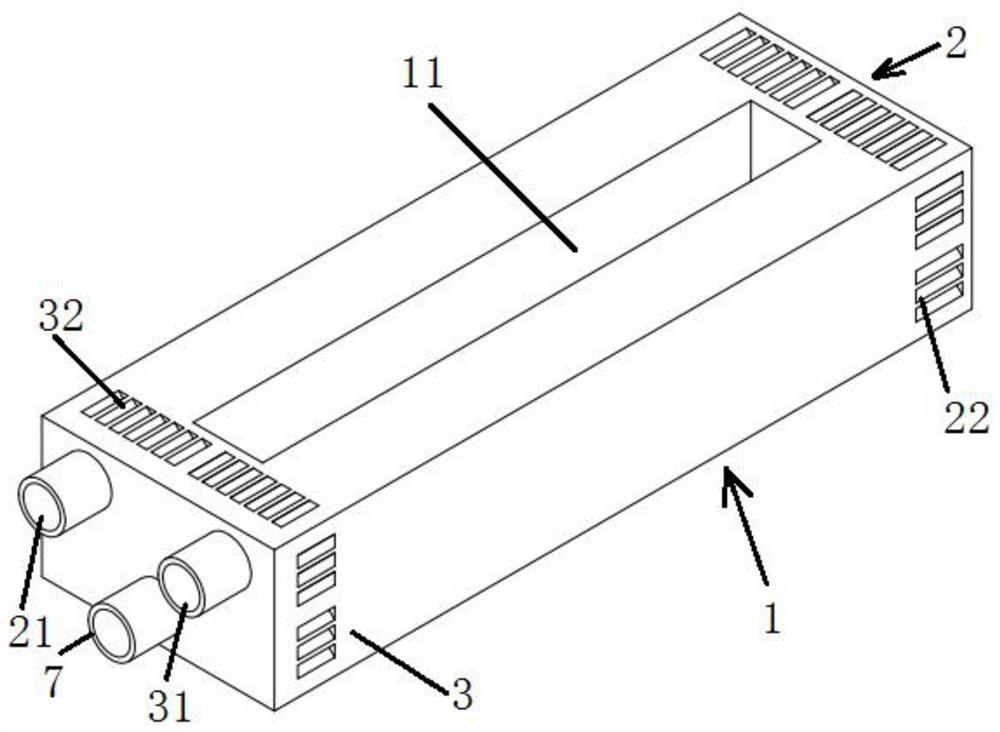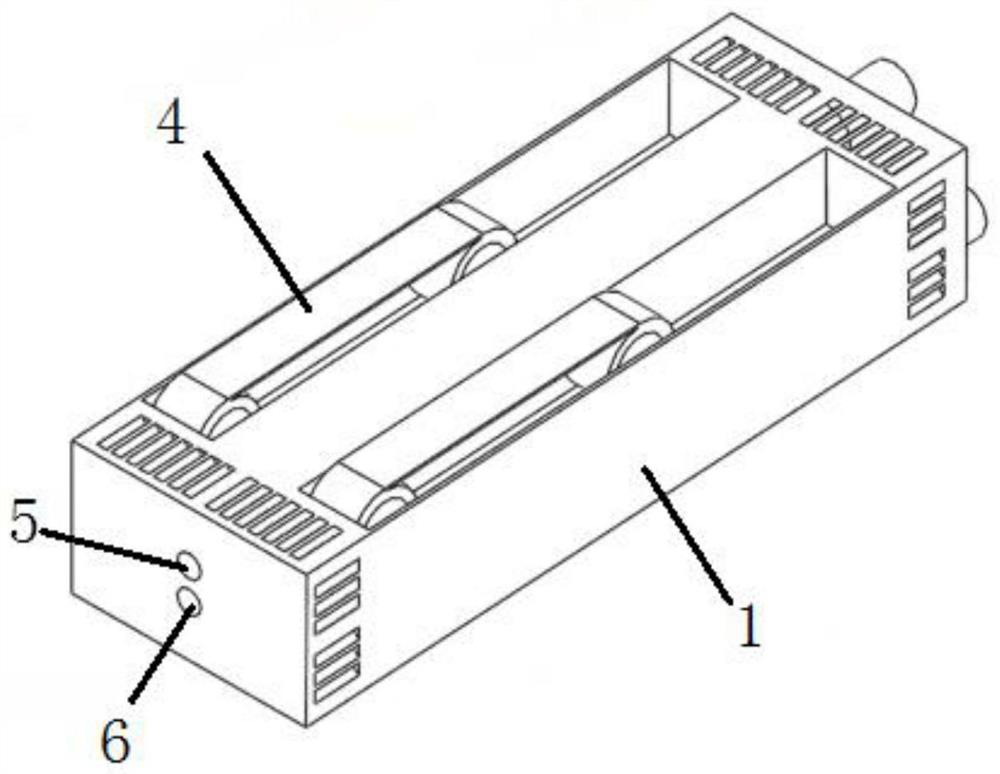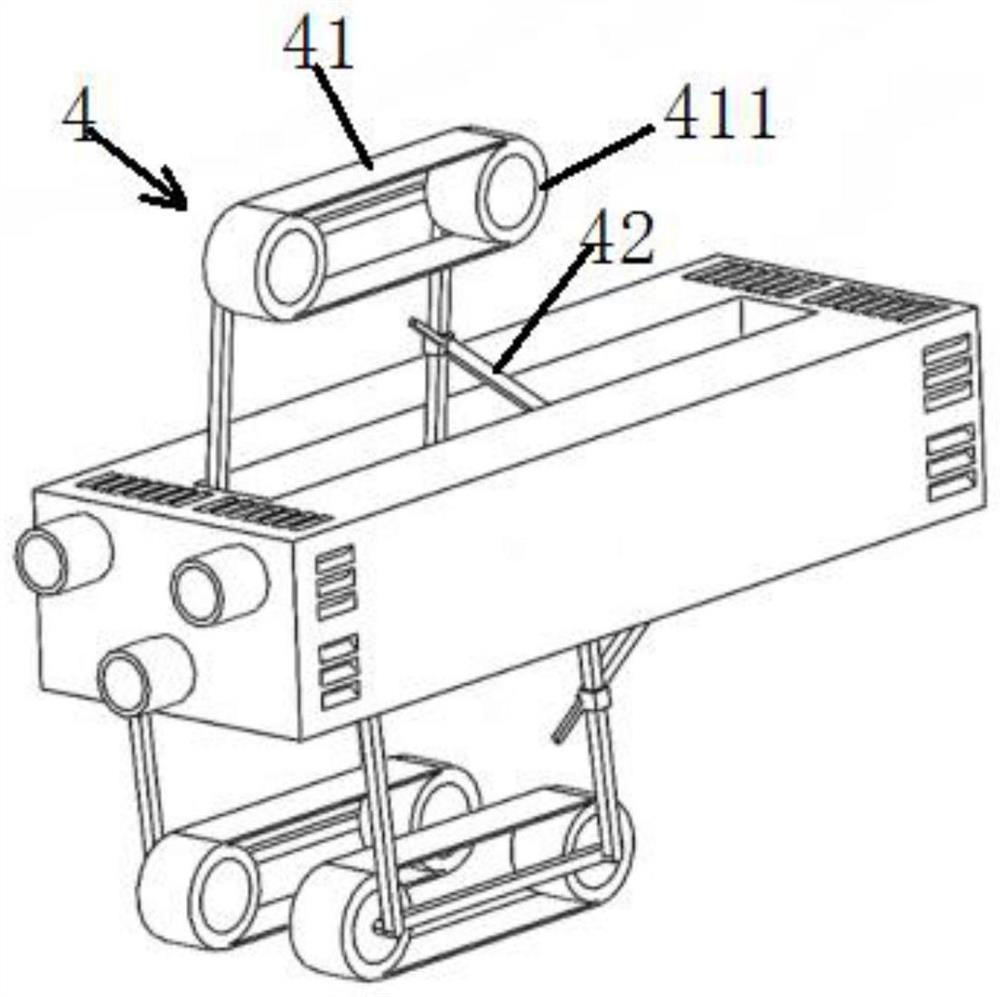Self-adaptive air duct robot for dust removal operation in limited space
A limited space, self-adaptive technology, applied in the field of robotics, can solve the problems of high time cost and economic cost, high maintenance cost of the fresh air system, and reduce the air quality of the passenger room, etc., to achieve enhanced adhesion and ramp passing ability, and simplified structure Complexity, the effect of improving dust removal efficiency
- Summary
- Abstract
- Description
- Claims
- Application Information
AI Technical Summary
Problems solved by technology
Method used
Image
Examples
Embodiment Construction
[0026] The embodiments of the present invention will be described in detail below with reference to the accompanying drawings, but the present invention can be implemented in many different ways defined and covered by the claims.
[0027] Such as Figure 1-5 As shown, the present invention discloses an adaptive air duct robot for dust removal operations in confined spaces, including a robot body 1, the minimum horizontal and vertical dimensions of the robot body 1 are 55mm and 35mm respectively, much smaller than the existing air duct cleaning The size of the robot is able to perform cleaning operations in many small and medium cross-section side air ducts and branch air ducts. The robot body 1 is equipped with a positive pressure air injection device 2 for blowing away the dust on the side wall of the confined space, a negative pressure recovery device 3 for absorbing and outputting the blown away dust, and a crawler belt for driving the robot body 1 to walk The traveling de...
PUM
 Login to View More
Login to View More Abstract
Description
Claims
Application Information
 Login to View More
Login to View More - Generate Ideas
- Intellectual Property
- Life Sciences
- Materials
- Tech Scout
- Unparalleled Data Quality
- Higher Quality Content
- 60% Fewer Hallucinations
Browse by: Latest US Patents, China's latest patents, Technical Efficacy Thesaurus, Application Domain, Technology Topic, Popular Technical Reports.
© 2025 PatSnap. All rights reserved.Legal|Privacy policy|Modern Slavery Act Transparency Statement|Sitemap|About US| Contact US: help@patsnap.com



